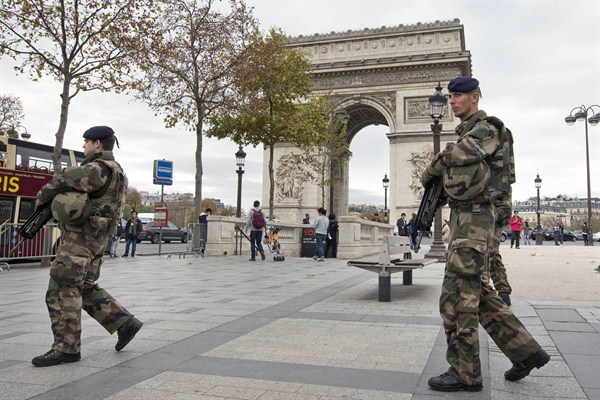PARIS—The multiple coordinated attacks that struck Paris on Friday mark a new operational phase of France’s war, as part of the U.S.-led coalition, against the self-declared Islamic State. Nevertheless, the same local and geopolitical obstacles to a broader consensus on the conflict in Syria continue to hamper efforts to craft a new strategic approach for eradicating the group there. As a consequence, France and its European partners must brace their populations against the likelihood of similar attacks in the future, even as they adopt a more pro-active and transnational approach to preventing them.
The major differences between Friday’s attacks and the ones carried out against Charlie Hebdo and the Hyper Cacher supermarket in January center on the nature of the victims, the operational mode and the weapons deployed. The January victims were targeted for their identity, individual in the case of the Charlie Hebdo editorial team and collective in the case of the Jewish customers of Hyper Cacher. By contrast, Friday’s killings were indiscriminate.
Operationally, the January attacks were only loosely coordinated if at all, and both were directed against fixed targets. Moreover, despite having ample opportunity to do so, the Charlie Hebdo attackers did not turn their weapons on other innocent civilians after the initial shooting in the magazine’s offices. Friday’s attacks involved three tightly coordinated teams, with at least one of them being a roving assault, all with the objective of maximizing the number of victims.

